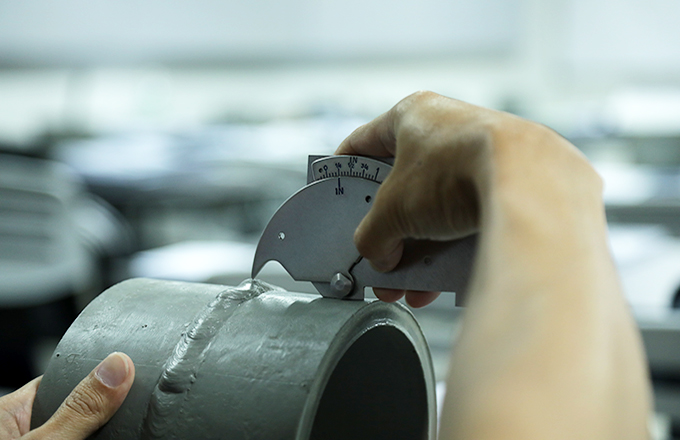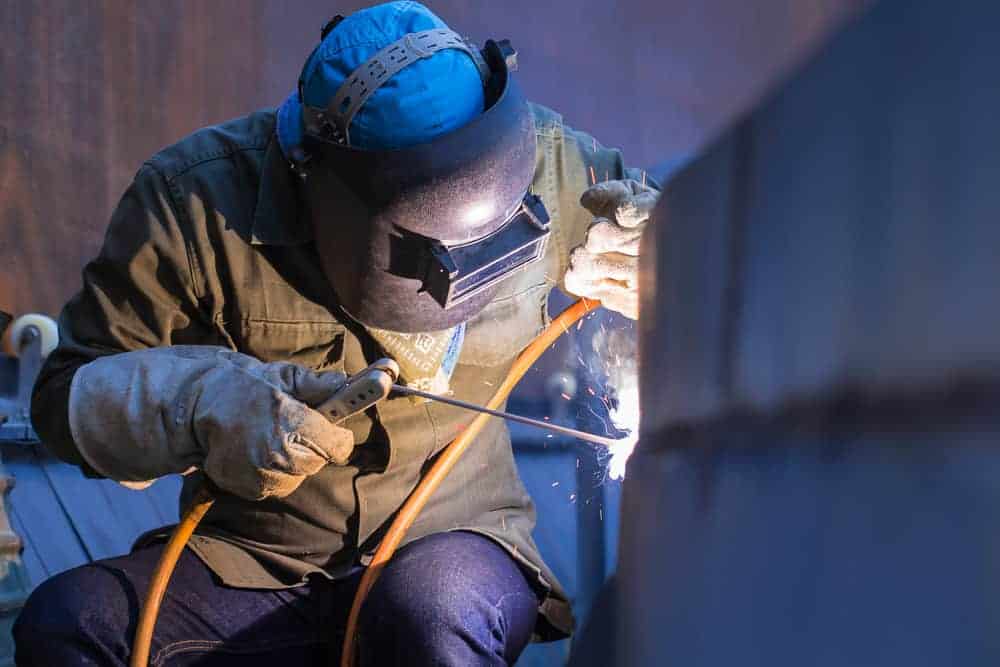Discovering the Fundamentals of Welding Assessment: A Comprehensive Evaluation of Procedures, Devices, and the Value of High Quality Control in Welding Industries
Welding inspection offers as a keystone in the upkeep of safety and security and architectural integrity across different industries. Comprehending the implications of these practices raises important questions concerning their efficiency and the future instructions of quality guarantee in welding.
Value of Welding Evaluation
Welding evaluation plays an essential duty in making sure the honesty and security of bonded frameworks. It acts as a methodical approach to assessing weld quality, determining prospective defects, and guaranteeing conformity with well-known requirements and specifications. The significance of welding evaluation prolongs past plain adherence to regulations; it is essential in protecting human lives and safeguarding financial investments in facilities.
Defective welds can lead to devastating failings, resulting in substantial economic losses, injury, or loss of life. Rigorous examination processes are vital to find concerns such as inadequate infiltration, porosity, or cracks before they intensify into crucial failings. In addition, efficient welding evaluation adds to the overall performance and longevity of frameworks, guaranteeing that they can endure the problems for which they were designed.
In addition, the application of welding examination cultivates a society of top quality and accountability within the welding industry. By prioritizing assessment, organizations show their commitment to excellence, consequently boosting their track record and competition in the industry. Eventually, welding examination is not just a procedural action however a basic component of engineering integrity and safety and security assurance, essential for the successful implementation of welding projects across various fields.
Key Assessment Processes
A thorough approach to welding examination entails a number of essential procedures that are essential for ensuring weld quality and architectural honesty. The very first crucial process is visual examination, which enables assessors to identify surface issues such as cracks, porosity, and incorrect grain look. This method functions as a preliminary examination to make sure that the weld fulfills specified standards.

Furthermore, destructive testing might be done on sample welds to examine their mechanical buildings and performance under stress. This procedure includes tensile, exhaustion, and effect testing to confirm that the weld can endure operational problems.
Last but not least, documents and reporting are important parts of the evaluation procedure. Maintaining accurate records of evaluations, monitorings, and examination results aids make certain conformity with industry requirements and helps with continual improvement in welding techniques. Collectively, these vital procedures create the foundation of reliable welding examination and quality guarantee.
Devices for Weld Evaluation
Many tools are crucial for efficient weld assessment, each designed to analyze different aspects of weld top quality and performance. Amongst the most extensively made use of are aesthetic evaluation tools, including magnifying glasses and borescopes, which make it possible for examiners to recognize surface issues such as fractures, porosity, and improper blend.
In addition, ultrasonic screening (UT) equipment is important for detecting inner defects. This tool employs high-frequency acoustic waves to disclose gaps within the weld, making sure the stability of the product. Radiographic screening (RT) devices, which use X-rays or gamma rays, in a similar way give understanding right into the internal framework of welds, enabling the recognition of incorporations or gaps.
For accurate dimensions, calipers and assesses play a significant role in making sure and establishing weld measurements adherence to specified tolerances. Solidity testers review the mechanical homes of the weld, guaranteeing it meets performance requirements.

Strategies for Examining Quality
Exactly how can the high quality of welds be reliably evaluated? A selection of strategies are employed to assess weld integrity and ensure adherence to defined criteria. Visual inspection is one of the most fundamental method, permitting examiners to recognize surface flaws such as fractures, porosity, or undercutting. This non-destructive technique works as an initial click here now evaluation before advanced methods are used.
Ultrasonic screening (UT) is one more noticeable technique that utilizes high-frequency audio waves to find internal problems within the weld. Houston Welding Inspection. This method gives a thorough sight of the weld's integrity without compromising its structural honesty. Additionally, radiographic testing (RT) employs X-rays or gamma rays to disclose interior problems, supplying thorough understandings into weld quality
Magnetic bit screening (MT) works for finding surface area and near-surface interruptions in ferromagnetic products, utilizing electromagnetic fields and colored fragments to highlight defects. Finally, dye penetrant screening (PT) can be employed to uncover surface-breaking imperfections by using a dye that seeps right into cracks and is consequently exposed.
Conformity With Industry Specifications
Conformity with market requirements is critical for making certain the quality and security of welded frameworks. These criteria, established by organizations such as the American Welding Culture (AWS) and the American National Specification Institute (ANSI), supply standards that govern i thought about this the welding process, materials, and assessment protocols. Following these requirements not just makes sure the architectural stability of welds yet also alleviates threats linked with failings that could result in devastating effects.

Welding assessors are tasked with validating compliance with these standards throughout the welding process (Houston Welding Inspection). This involves evaluating welding procedures, keeping track of welder credentials, and performing detailed inspections of the last item. Non-compliance can lead to substantial monetary effects, project hold-ups, and damage to a firm's online reputation
Furthermore, conformity fosters a society of quality assurance within the organization. By establishing clear expectations and benchmarks, firms can keep consistency read this article in their output and improve general productivity. Regular training and updates on standards are essential to maintain workers notified and knowledgeable, guaranteeing that all elements of welding operations satisfy or surpass regulative requirements. Ultimately, commitment to industry criteria works as a structure for excellence in the welding industry, promoting security and integrity in bonded frameworks.

Final Thought
In conclusion, welding examination serves as a critical part in preserving the safety and security and honesty of welded frameworks. Adherence to industry criteria guarantees conformity and advertises a culture of quality within the welding industry.
Additionally, the execution of welding assessment fosters a society of quality and responsibility within the welding market. Ultimately, welding examination is not just a procedural step yet an essential part of design honesty and safety guarantee, important for the successful implementation of welding tasks across numerous sectors.
A detailed method to welding examination includes numerous essential procedures that are important for making certain weld quality and architectural integrity. These requirements, established by companies such as the American Welding Society (AWS) and the American National Specification Institute (ANSI), offer standards that govern the welding procedure, products, and evaluation methods.Welding assessors are tasked with confirming conformity with these criteria throughout the welding process.
Comments on “Thorough Houston Welding Inspection for Enhanced Efficiency and Longevity”